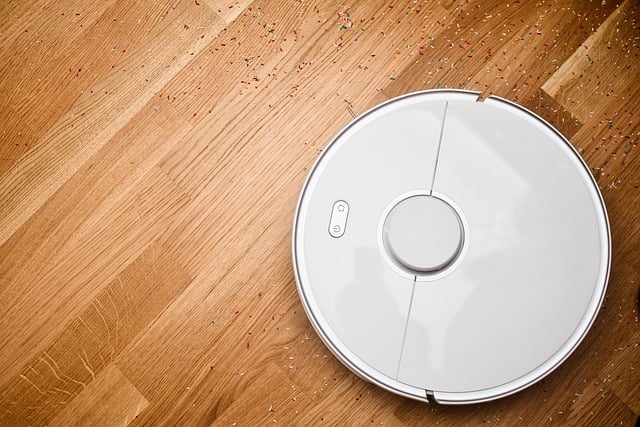Are you considering getting a robot vacuum but wondering how long it will take to clean your home? Or maybe you already own one and are curious about the time it takes to complete a cleaning cycle? In this blog post, we will delve into the factors that influence the cleaning time of robot vacuums.
We will explore the impact of various factors such as the size of the cleaning area, the type of flooring, the battery life of the robot vacuum, and the cleaning mode being used. Additionally, we will discuss how advanced technologies like mapping and navigation systems can optimize cleaning time.
Furthermore, we’ll address common questions such as whether robot vacuums are as efficient as traditional vacuums, and how they compare in terms of time efficiency. By the end of this post, you’ll have a comprehensive understanding of the factors influencing the cleaning time of robot vacuums and be equipped to make an informed decision about incorporating this innovative technology into your cleaning routine.
How to Schedule Robot Vacuum Cleaning?
Scheduling your robot vacuum for cleaning is a convenient way to ensure your floors stay tidy without manual intervention. Most robot vacuums come with a scheduling feature that allows you to set specific times for cleaning, such as daily or on specific days of the week.
To schedule your robot vacuum, start by checking the user manual or the manufacturer’s website for instructions on how to access the scheduling feature. Once you’ve located the scheduling function, you can input the desired cleaning times using the vacuum’s control panel or smartphone app.
Scheduling your robot vacuum to clean during times when you’re away from home can help minimize disruption and ensure that your floors are consistently clean. Additionally, setting a regular cleaning schedule can help maintain the cleanliness of your floors and reduce the need for manual vacuuming.
Factors Affecting Robot Vacuum Cleaning Time
The size of the area to be cleaned is a significant factor, as larger spaces will naturally take longer to clean than smaller ones. The layout of the space, including furniture, obstacles, and room transitions, can affect the cleaning time as the robot vacuum navigates around them.
The complexity of the cleaning task, such as the presence of carpets, rugs, or multiple floor types, can impact the cleaning time as the robot vacuum adjusts its cleaning mode and suction power accordingly. The battery life and charging capabilities of the robot vacuum can also influence cleaning time, as a longer battery life or the ability to resume cleaning after recharging can reduce overall cleaning time.
The efficiency of the robot vacuum’s navigation system and sensors can affect cleaning time, as advanced systems may navigate more quickly and effectively, reducing cleaning time. The cleaning mode selected, such as spot cleaning, edge cleaning, or a full cleaning cycle, can also impact the overall cleaning time based on the specific needs of the space.
The presence of pet hair, debris, or dirt may require the robot vacuum to spend more time on a particular area, increasing the overall cleaning time. The frequency of cleaning, whether the robot vacuum is scheduled daily, weekly, or on demand, can also impact the cleaning time based on the level of maintenance required.
The age and condition of the robot vacuum, including the quality of its components and filters, can influence cleaning time as older or less efficient models may take longer to achieve the same cleaning results. The level of maintenance and regular cleaning of the robot vacuum itself can impact its performance and, consequently, the cleaning time required for each session.

Tips for Optimizing Robot Vacuum Cleaning Efficiency
When using a robot vacuum, it’s essential to prepare the cleaning area by removing any small objects, cables, or obstacles that could impede the vacuum’s movement. Additionally, decluttering the space and lifting any low-hanging drapes or curtains can help the robot vacuum navigate more effectively.
To make the most of your robot vacuum’s cleaning cycles, consider scheduling regular cleaning sessions, particularly in high-traffic areas or spaces prone to accumulating dust and debris. Furthermore, investing in a vacuum with advanced sensors and mapping capabilities can enhance its efficiency and reduce the likelihood of repeated cleaning in the same areas.
The Bottom Line: Making the Most of Your Robot Vacuum’s Cleaning Time
When it comes to maximizing your robot vacuum’s cleaning time, a few simple tips can make a big difference. Firstly, ensure that the cleaning area is free from clutter and obstacles to allow the robot vacuum to move freely and efficiently. Additionally, consider investing in a robot vacuum with advanced sensors and mapping capabilities to optimize its cleaning route and coverage.
Regular maintenance of your robot vacuum, such as emptying the dustbin and cleaning the brushes, can help maintain its efficiency and overall performance. Furthermore, scheduling cleaning sessions during times when the area is least occupied can prevent interruptions and allow the robot vacuum to complete its cleaning cycle without disruptions.
By implementing these tips, you can make the most of your robot vacuum’s cleaning time and enjoy consistently clean floors with minimal effort.

